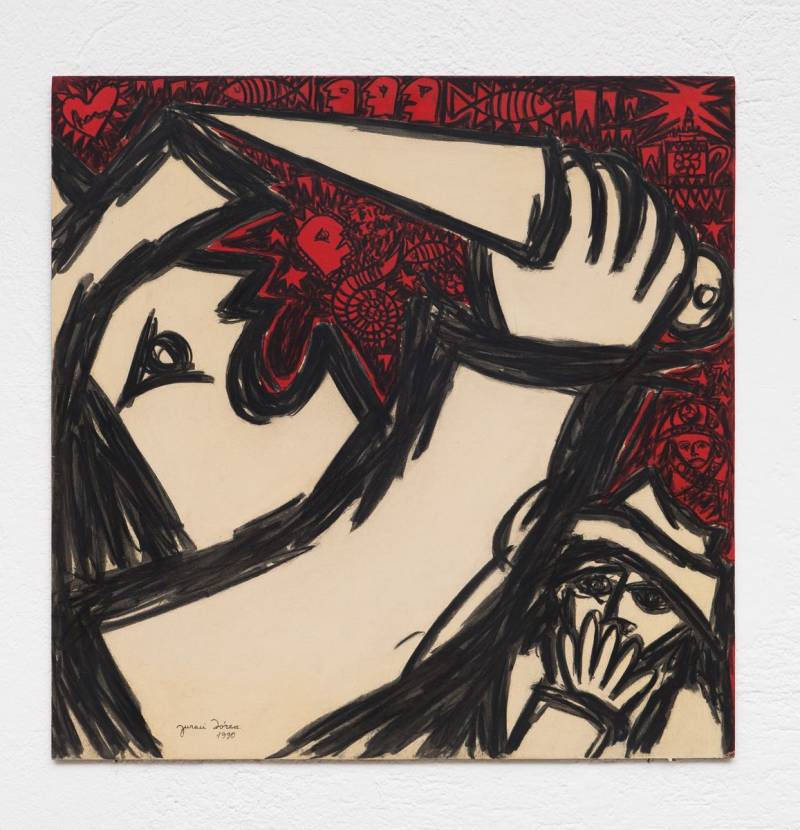
Juraci Dórea
Ecce Homo III, 1990
charcoal and pva paint on eucatex
60 x 60cm
Available
About Juraci Dórea
To study architecture, in the 1960s Juraci Dórea moved from Feira de Santana to Salvador, where he witnessed the intense cultural production that arose there out of the encounter between the experimental vanguardist attitude and the singular experience of a territory steeped in an Afro-Brazilian heritage. After earning his degree, Dórea returned to his hometown, the municipal seat of the metropolitan region of Portal do Sertão. There, he began to construct a consistent oeuvre, which gradually brought about a convergence of contemporary visual languages with backcountry roots and traditions. His Estandartes de Jacuípe [Banners of Jacuípe] (1975), for example, are rhythmed and symmetric abstract compositions made of treated cowhide, sewn with the same processes used in the common production of saddles and clothing for cowboys. In the 1980s, Dórea’s telluric connection took on another power of magnitude. After beginning his Projeto Terra [Project Earth] (1982 - ), he not only assimilated backcountry artisanal know-how, but also traveled deep into the Bahian backcountry to implant his works in that landscape, often making use of the materials he found in the fields and pastures. Due to this new focus, the primary public of his work was no longer the urban visitor of cultural institutions but rather an audience consisting largely of backcountry dwellers. The records produced in this context, in the form of photographs, films, reports and texts, document not only Dórea’s creative trajectory, but also countless shocks and rearrangements between conceptions of art, language and territory.
INQUIRE